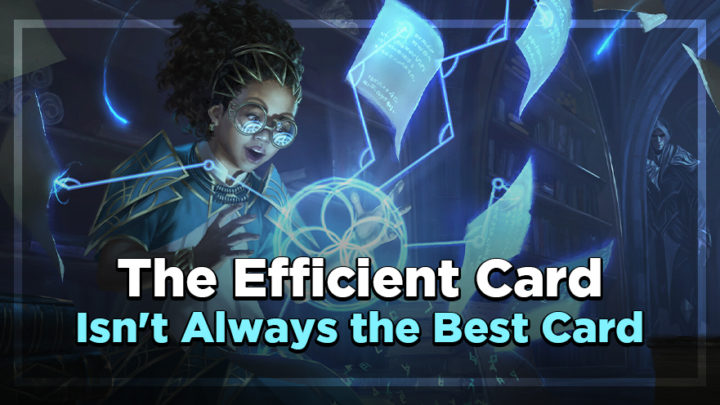In our pursuit of efficiency, we’re leaving perfectly playable and sometimes powerful cards behind. While some cards can be considered casualties of inevitable power creep, many of the most useful effects in the format can be too readily discarded. Today, I’d like to make a case for another way.
Pursuing Efficiency
It’s safe to say that the Commander community is obsessed with efficiency. Most of us are always looking out for the next upgrade for our decks, and if the new card is cheaper to cast, we’re usually over the moon.
It’s inevitable that decks will become stronger over time. Many players enjoy tinkering away, moving pieces around and figuring out the perfect ratio of spells. As we play our decks over time, we’ll spot areas for improvement — and this goes for just playing the format, too. We can all remember just starting out and discovering the more powerful and efficient spells we didn’t know existed before furiously researching and ordering singles.
Playgroups have a naturally shifting metagame, too. If you’re lucky enough to have a regular playgroup, you’ll know that over time, things can change. Though sometimes an arms race is inevitable — and even leads some players to discover a love for cEDH — there’s still a marked shift in what the playgroup considers playable. This can be because of certain archetypes that appear often, because of certain commanders, or even just because a new player joined the group and shared some new ideas.
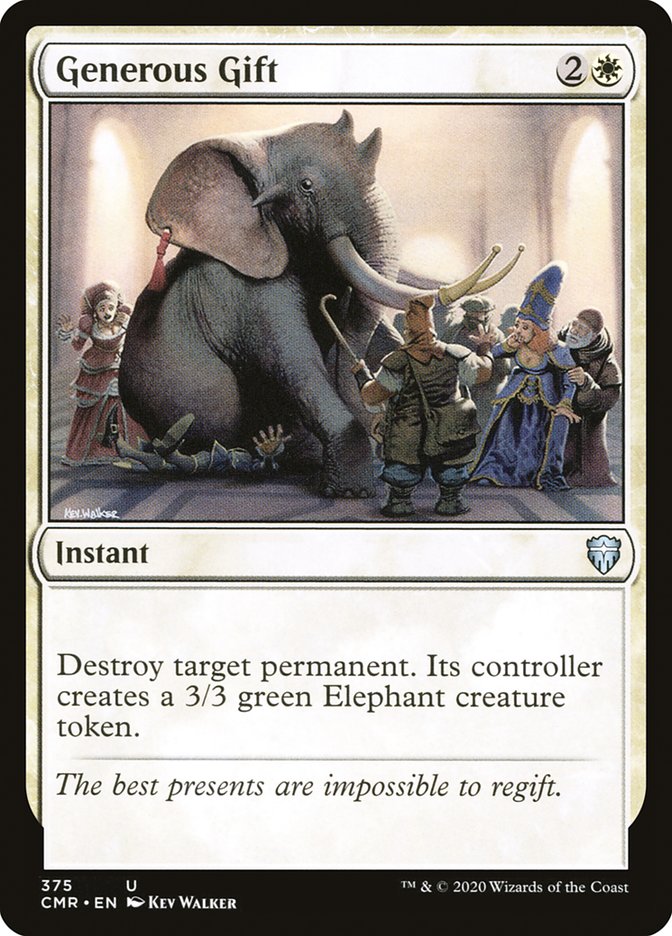
But it’s impossible to talk about pursuing efficiency without addressing the elephant in the room: content creation. Efficiency is what enough of the player base desires, so naturally, it’s what drives a lot of content creation, too. Whether you’re watching your favorite personalities play on Game Knights or just catching up on articles evaluating new cards, efficiency is always at the forefront, and many of those putting out content will advocate for it.
I wouldn’t necessarily say it’s a bad thing to share knowledge and inform players how to make their decks better — it’s something I actively partake in, too. But when we only focus on the “best” cards, we can create an environment that stifles creativity. Evaluating cards in this way can ultimately lead to bad choices when it comes to deck building; this is especially true when we stick too rigidly to a “script” — something I’ve written about before.
The culmination of this approach is consulting EDHREC, but not knowing how best to use it. Many players visit the page for their commander and go no further, and this can lead to unbalanced deck building that might not synergize with the strategy they want to play. Just because the cards are rated most popular doesn’t necessarily mean they’ll work out.
As the format pushes ever closer toward efficiency at any cost, it becomes necessary to ask ourselves what exactly that cost is. If Efficiency is essentially a spell that costs the least amount of mana — sometimes even at instant speed — why would that be a bad thing? Well, because having options is better at lower levels of play — and sometimes better at stronger tables, too.
Card Evaluation
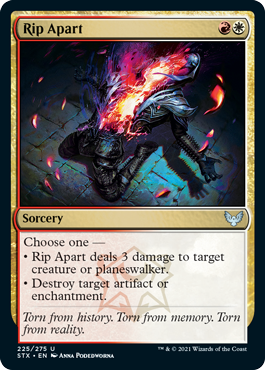
The one thing that baffled me most during Strixhaven preview season — that wasn’t, of course, how the etched foils ended up looking — was the polarizing discussion around Rip Apart.
Rip Apart is an incredible removal spell. For just two mana, it gets rid of a whole lot of things you’d rather not have to face across the table. Hitting creatures, planeswalkers, artifacts and enchantments is a lot for such a cheap cost, and as far as Boros cards in particular? It’s a home run.
People immediately dismissed this card, though, because it wasn’t an instant. “Too slow” was the common refrain, and honestly? I’m not sure what format they were evaluating it for. Boros is notoriously underpowered when it comes to higher levels of play, Winota aside, and to dismiss a card just because it can’t be cast on an opponent’s turn when it does so much seems, to me, emblematic of a broader issue.
Yes, the card could have been an instant, and it undoubtedly would have been better. But it also would have affected Modern a lot more, and given a powerful new tool to Burn decks. It would also have been available to cast off of Sunforger, and beaten out other similar spells as the de facto best in slot. While the latter might not be an issue, we are looking at a card designed for a Standard set, and getting that much flexibility for that cost is out of the question.
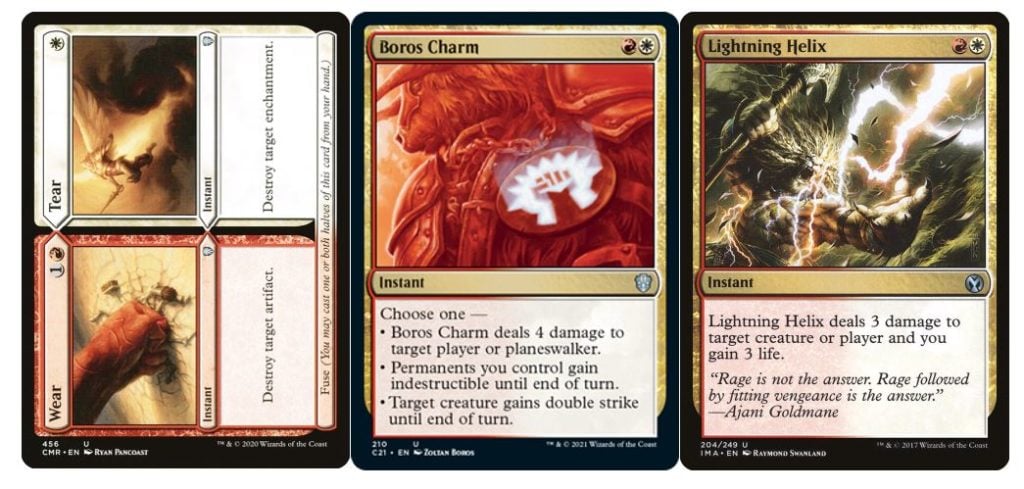
Looking at the other options available, Rip Apart would have been setting a big precedent when it comes to the rate on a two-mana spell. Disenchant, the current cheapest effect in white, can’t do damage to creatures or planeswalkers.
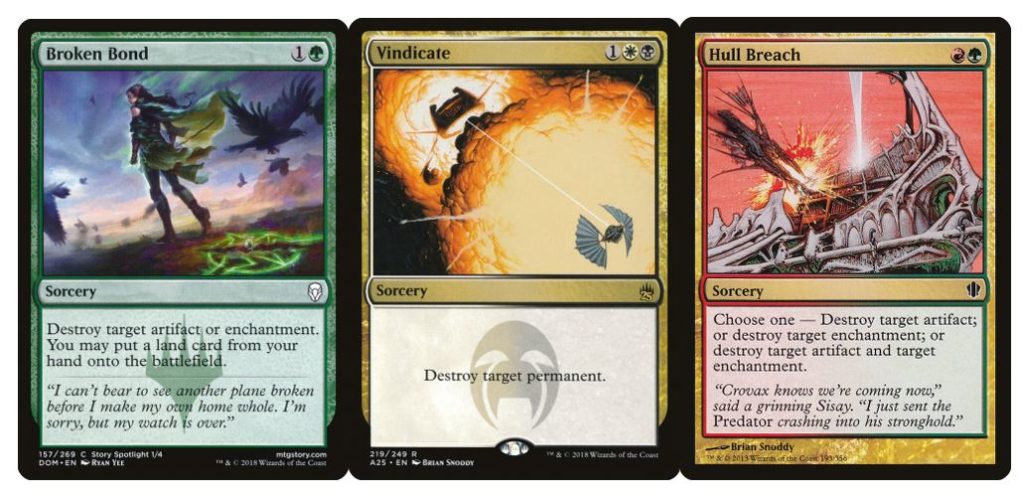
While it’s true that not getting to play a spell at instant speed can make it worse, there are a whole host of sorcery-speed spells that deserve more of a look than they’re currently getting. At casual tables and tables without as many instant-speed combos, you don’t need all of your interaction to come in the form of instants — especially the supplementary, flexible kind of interaction that Rip Apart epitomizes. Think of the latest divisive removal spells, Feed the Swarm and Ravenform. They’re absolutely not in contention for efficiency, but they are flexible, and offer something other cards in those colors cannot do. The reason they’re playable is because of that flexibility.
Where is Efficiency worth it?
Efficiency is no doubt worth it in the right scenarios — don’t get me wrong.
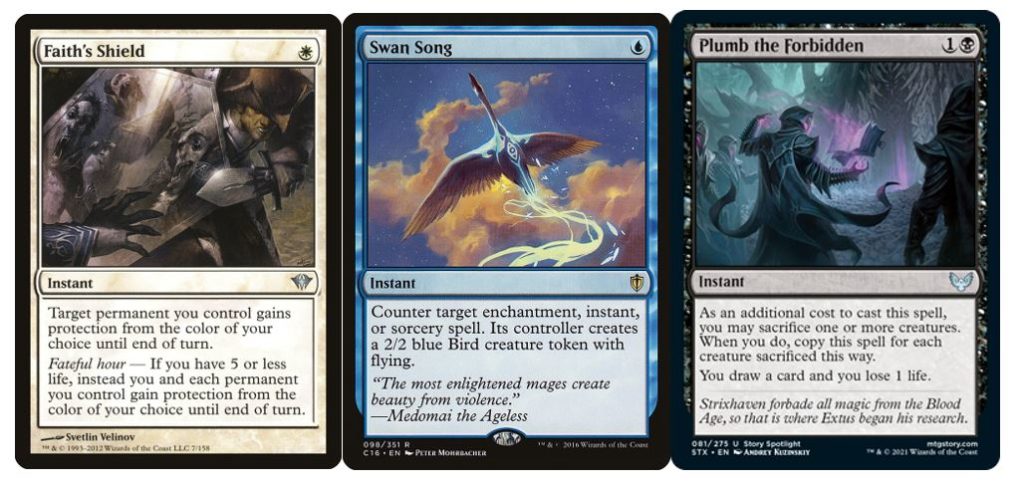
I really like my defensive effects to be as efficient as possible. Holding up one mana, or even two, is a lot easier than holding up more when you’re playing a deck that often taps out. Faith’s Shield is a sweet one-time effect that helps you save your Boros Charm for a more important turn. Swan Song is infinitely more castable than Summary Dismissal, a favorite counterspell of mine that can answer most problems on the stack. It’s also easier to cast than Disallow, a spell many prefer over Summary Dismissal. Plumb the Forbidden is an incredibly exciting new spell — it can refill in response to a board wipe, and it’s virtually uncounterable, since it can be copied for value.
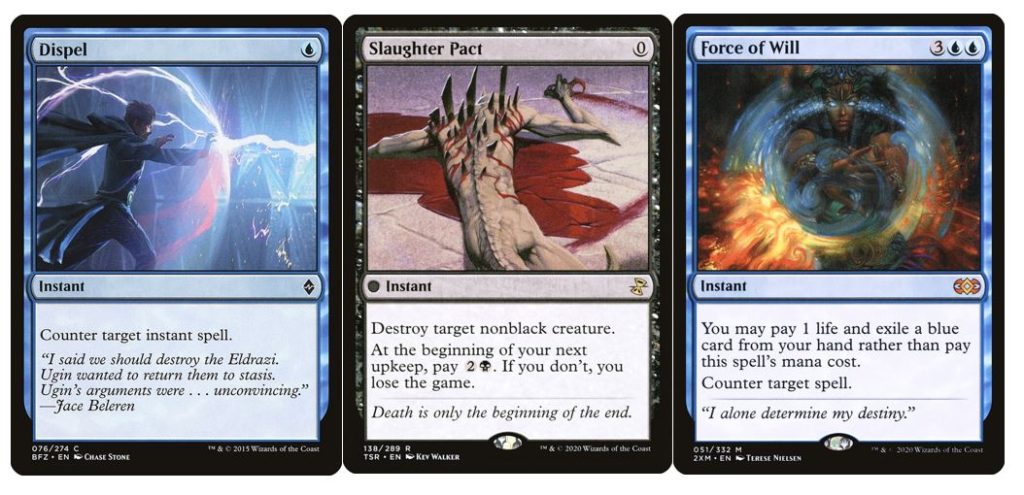
Efficiency is king in competitive EDH, too. Having a one-mana counterspell in Dispel is worth way more than a three-mana counterspell that’s more flexible. Slaughter Pact’s clause doesn’t matter if you’re going to win the turn you cast it, but the exile clause on Baleful Mastery is probably better at a casual table that might recur threats. Losing cards in hand to Force of Will doesn’t matter in a faster game, but in a casual game? Going that low can be disastrous.
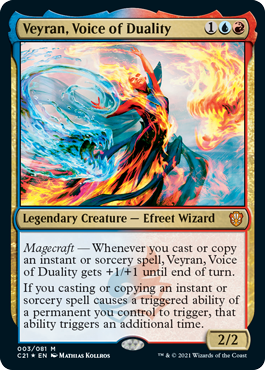
The cEDH comparison is easy, I’ll give you that. What’s more relevant, perhaps, is how efficiency is often worth it in Spellslinger decks. Being able to cast cheap effects in order to trigger abilities can be just what your deck needs. The new Veyran, Voice of Duality, for example, cares less about the “top” red and blue spells, and more about how many triggers it can rack up in a turn.
The truth of the matter is that modality is often just better, though — and it’s something we can easily lose sight of in our pursuit of efficiency.
Consider How You Evaluate Cards
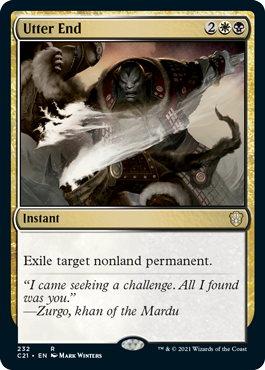
Some cards have undoubtedly become casualties of the format’s power creep. Consider Utter End, a card that until recently was considered one of the better removal spells in the format.
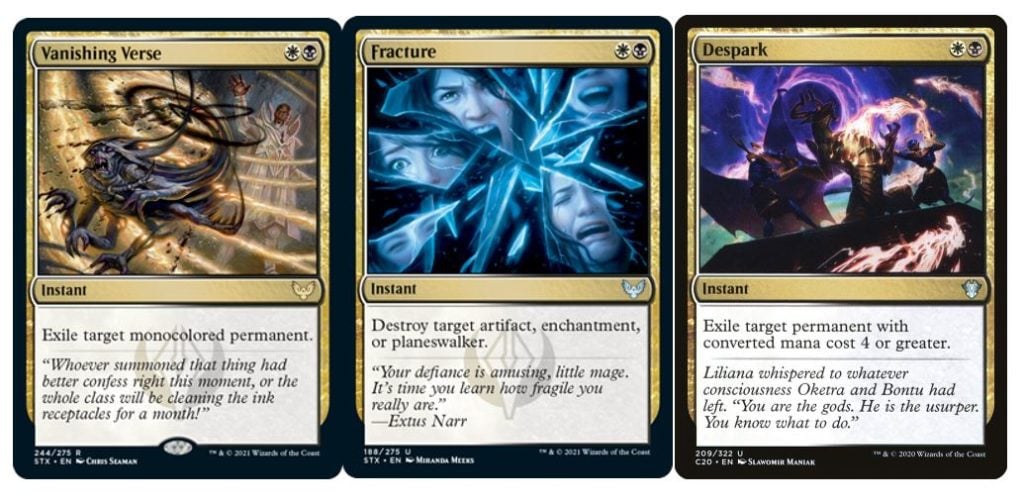
Thanks to the glut of good removal we’ve seen in the past couple years, it seems really hard to justify Utter End anymore. It simply costs too much, and you lose too much tempo tapping out for it. I’ve written about this elsewhere, in particular about how the tempo swing from casting Dismantling Wave is worth way more than the main phase double exile on Return to Dust these days.
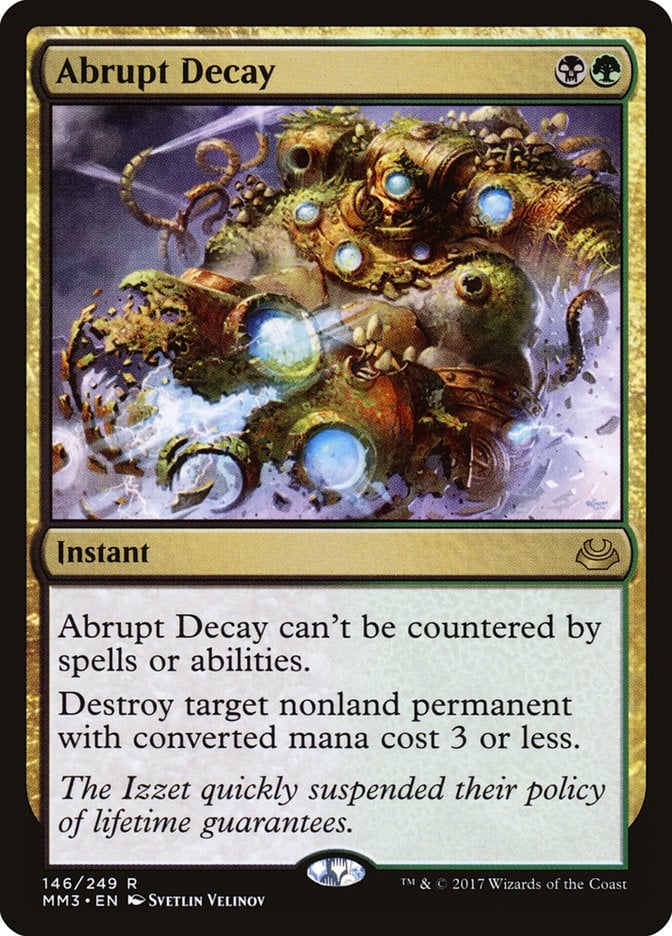
Would you always play Abrupt Decay? It’s very efficient and can be cast at instant speed, after all. The thing is, mana value three or less is much too narrow in casual metas. In cEDH, it’s a lot easier to justify. While I do think it’s neat that a card like Nature’s Claim is a slam dunk in whatever meta you’re playing, when it comes to your other removal spells, there’s plenty of reasons to diversify.
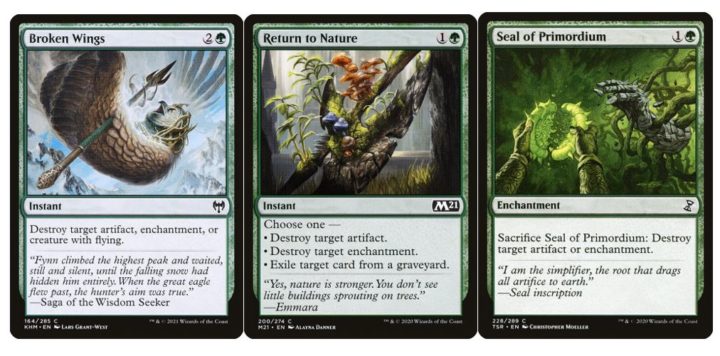
Broken Wings is a steal at three mana, especially given how many people love to play Angels, Dragons, and other evasive threats. Return to Nature’s exile clause is always relevant, no matter when I see it. Try out Seal of Primordium to gain virtual card advantage instead. You should have no issues recurring it in a Golgari deck.
Modal Cards are Worth it
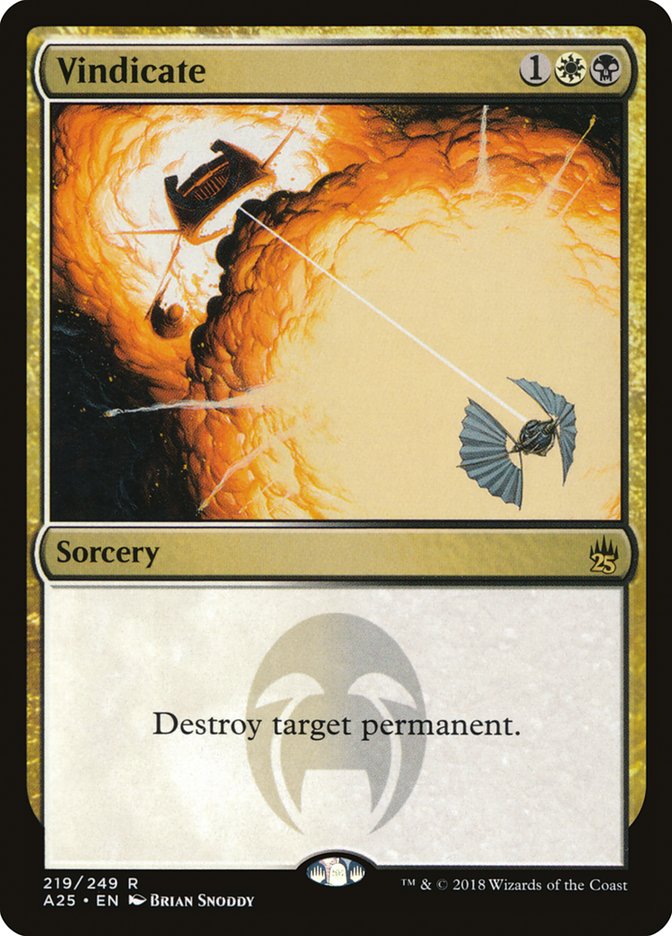
It’s funny how Utter End being put out to pasture is such an easy call, when Vindicate is still very much up for debate. The card has just enough versatility (one mana cheaper and able to hit lands) that it always scores bonus points in this conversation. But I think what still draws me toward Vindicate is just how good lands are in the format these days.
With the emergence of MDFC lands, the re-emergence of bounce lands as a way to reset them, and the greedier mana bases that drop redundant copies of Ghost Quarter? It’s a perfect storm that makes Vindicate still relevant.
It’s the modality that makes Vindicate still worth a look, and what makes Rip Apart so enticing, even at sorcery speed.
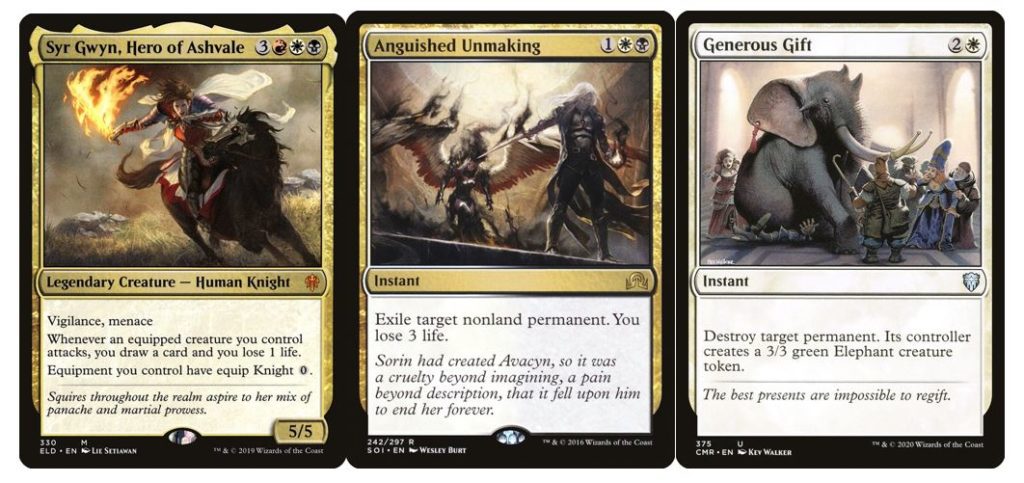
My experience playing Syr Gwyn is that I like to have universal answers, and really lean into that ruthless aspect of playing black. Alongside removal spells, creatures and planeswalkers get in on the action, too: Cavalier of Dawn, Vona, Butcher of Magan, both Ugins.
On a surface level, modality is about being able to adjust to the changing tides of a game more readily, but it’s also ultimately about fitting more than 100 cards into your Commander deck. While a companion might literally add a 101st card, it’s modal spells that do the heavy lifting.
To figure out what modal spells are appropriate for your deck, you’ll have to consider the synergies of your strategy, and scraping the internet for the top/best spells won’t always help.
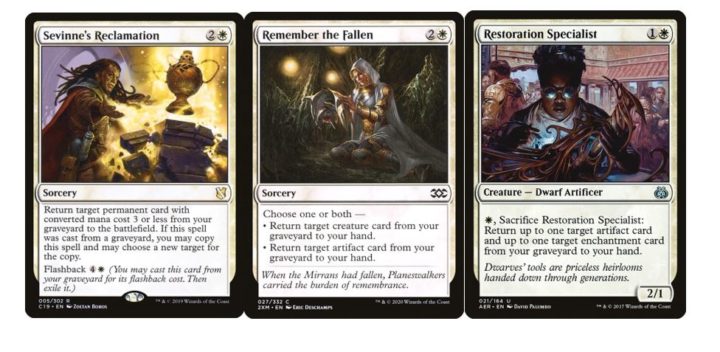
Sevinne’s Reclamation is widely considered the “best” card in slot for recursion of cheaper permanents, but it might not always be the best card for your deck. Remember the Fallen is great for Syr Gwyn because it buys back an equipment or one of the pricier creatures; Restoration Specialist might be better in Killian, Ink Duelist because it can get both Aura enchantments and Equipment that cost more than three.
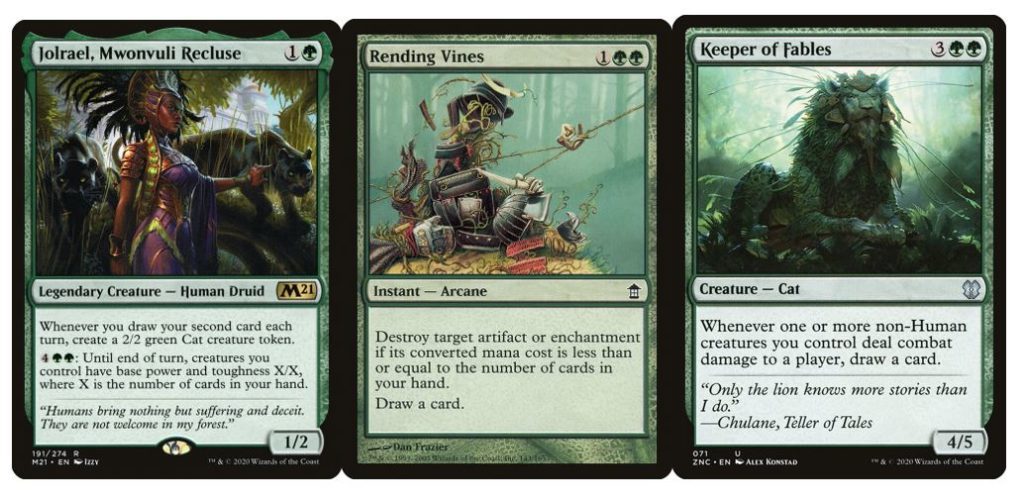
Those evaluations even go as deep as the type of deck you’re building, too. While Rending Vines seems like an auto-include given how it replaces itself, it’ll perform better in a deck built to use as many cantrips as possible than in a deck that likes to play out a hand before refilling with a big draw effect. Toski, Bearer of Secrets might seems like an upgrade to Keeper of Fables, but not if you have Qasali Slingers.
Ultimately, you need to factor in more than just what’s popular when it comes to deck building, and the best way to figure that out is to build a deck and play some games without thinking too much about it. While the opinions of content creators, sites like EDHREC, and even social media might give you the “best” cards, they might not be the best for you. As ever, let me know your thoughts on Twitter.

Kristen is Card Kingdom’s Head Writer and a member of the Commander Format Panel. Formerly a competitive Pokémon TCG grinder, she has been playing Magic since Shadows Over Innistrad, which in her opinion, was a great set to start with. When she’s not taking names with Equipment and Aggro strategies in Commander, she loves to play any form of Limited.

